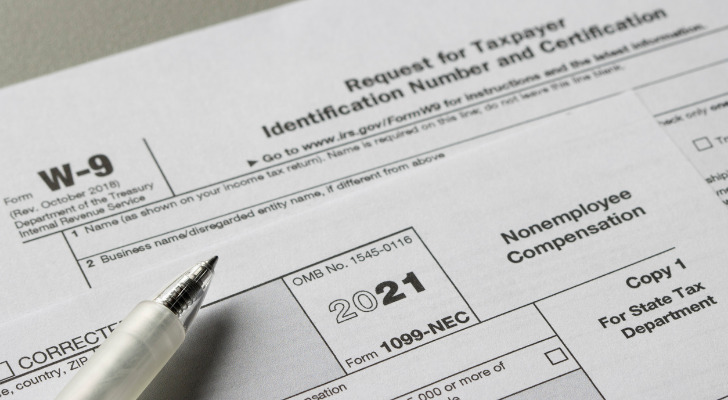A Taxpayer Identification Number (TIN) is a unique nine-digit number the Internal Revenue Service uses to identify individual taxpayers. A TIN can come in different varieties, including Social Security Number (SSN), Employer Identification Number (EIN), Individual Taxpayer Identification Number (ITIN) and Preparer Taxpayer Identification Number (PTIN). TINs are required any time taxpayers file tax returns and may also serve other purposes, including identifying people applying for jobs, loans and credit. Filing, paying and managing taxes is a key part of a solid financial plan.
For help with your taxes or any other financial considerations, consider working with a financial advisor.
Taxpayer Identification Number Basics
The IRS and Social Security use a variety of different TINs for individuals and entities depending on the circumstances. All TINs consist of nine numbers formatted as XXX-XX-XXXX, similar to a Social Security Number (SSN). Each TIN is unique and tied to an individual taxpayer, which may be a person, corporation, trust or other entity.
The IRS requires a valid TIN on any tax return, statement or other document related to taxes. TINs may also have many other uses in addition to being used by the IRS to administer tax laws.
Taxpayer Identification Number Types
The most familiar TIN is a Social Security Number (SSN). An SSN identifies an individual person and is issued by the Social Security Administration, in most cases at birth. A legal U.S. resident may also obtain an SSN. Social Security uses an individual’s SSN to track his or her earnings throughout a working life. Upon retirement or disability, the SSN is used to apply for Social Security benefits. The Social Security Administration has issued approximately 450 million SSNs since 1936 and has another 420 million unique numbers ready to be assigned.
The IRS also uses SSNs. Every individual tax return as well as all other tax-related documents sent to the IRS must include the individual’s SSN to be processed by the tax agency.
In addition to their use by Social Security and the IRS, SSNs are widely used as general-purpose identification codes in business and other branches of government. SSNs are also usually needed to open accounts, get credit cards, finance purchase of a home or auto, obtain a passport, receive a driver’s license and apply for a job, among other uses.
The IRS issues the other TINs upon receiving an application for a TIN from the taxpayer. These other TINs may identify an individual taxpayer, a corporation or other business enterprise as well as trusts and other legal entities.
The Employer Identification Number (EIN) is the most familiar of the non-SSN identification numbers. The IRS issues EINs to employers as well as corporations, estates, trusts, nonprofits and other entities. The EIN is used to identify a tax filer on a return as well as on other IRS documents.
Nonresident and resident aliens as well as their spouses and dependents who are not eligible for SSNs also have a special taxpayer number. For them, the IRS issues an Individual Taxpayer Identification Number (ITIN) to use when filing tax returns.
A Preparer Taxpayer Identification Number (PTIN) is issued by the IRS to paid tax return preparers. A tax preparer is required to use his or her unique PTIN on any returns prepared in exchange for compensation.
Yet another TIN is the Adoption Taxpayer Identification Number (ATIN). This TIN is a temporary identifier that can be used by an individual taxpayer who is in the process of adopting a child who is a U.S. citizen or legal resident. The temporary ATIN allows the adopting taxpayer to file a tax return while waiting to obtain an SSN for the adopted child.
Getting a Taxpayer Identification Number
If you are entitled to an SSN and don’t have one. fill out Social Security form SS-5 and send it to the Social Security Administration to get your Social Security. You can also use SS-5 for request a replacement for a lost or destroyed card. To receive an EIN from the IRS, fill out and submit IRS Form SS-4. Getting an ITIN requires completing and sending Form W-7 to the IRS. The ATIN application calls for a Form W-7A. The IRS will send a paid preparer a PTIN upon receiving a completed Form W-12.
The Bottom Line
A Taxpayer Identification Number is a nine-digit numeric code used by the Internal Revenue Service, Social Security Administration and many government agencies and private organizations to identify individuals, businesses and other entities. There are several kinds of TINs, including Social Security Numbers and Employer Identification Numbers as well as less familiar types. The IRS requires a TIN on any returns or other documents. Social Security requires a Social Security number in order to receive Social Security benefits.
Tax Tips
- A financial advisor can help you effectively manage your tax exposure. Finding a qualified financial advisor doesn’t have to be hard. SmartAsset’s free tool matches you with up to three financial advisors who serve your area, and you can interview your advisor matches at no cost to decide which one is right for you. If you’re ready to find an advisor who can help you achieve your financial goals, get started now.
- Whether you have a Social Security number or other TIN, it’s important to protect your taxpayer ID code. Keeping your TIN secret and secure will help protect you from identity theft and prevent criminals from fraudulently claiming tax refunds and other government payments. Keep your Social Security card in a safe place, such as a safe or bank lockbox. Also protect statements or other documents that have the TIN number, and consider encrypting computer files that have the information as well.
Photo credit: ©iStock.com/Kameleon007, ©iStock.com/hapabapa, ©iStock.com/PeopleImages


